March 1, 2020
Interior of the Earth – Earthquake & Volcanoes
Contents
- Our home planet is the 3rd planet from the Sun and 5th largest planet in the solar system.
- It is the only world in our solar system with liquid water on the surface.
- Radius of Earth
- Equator – 3,963 miles (6,378 km)
- Pole – 3950 miles (6356 km)
- Difference – 13 miles (22 km)
- Earth is the biggest of the terrestrial planets
- 150 million km distance from Sun.
- It takes about eight minutes for light from the Sun to reach our planet
- Earth completes one rotation every 23.9 hours.
- It takes 365.25 days to complete one trip around the Sun.
- That extra quarter of a day presents a challenge to our calendar system, which counts 1 year as 365 days.
- To keep our yearly calendars consistent with our orbit around the Sun, every 4 years we add 1 day.
- That day is called a leap day.
- Earth’s axis of rotation is tilted 23.4 degrees respect to its orbit

Interior of the Earth
- Due to gradual increase in density the temperature inside has increased.
- As a result the material inside started getting separated depending on their densities.
- This allowed heavier materials (like iron) to sink towards the centre of the earth and the lighter ones to move towards the surface.
- With passage of time it cooled further and solidified and condensed into a smaller size.
- This led to the development of the outer surface in the form of a crust.
- During the formation of the moon, due to the giant impact, the earth was further heated up.
- It is through the process of differentiation that the earth forming material got separated into different layers.
- It composed of 4 main layers
- Crust
- Mantle
- Outer core
- Inner core
The Crust
- It is the outermost solid part of the earth.
- Mean thickness of oceanic crust is 5 km.
- Thickness of continental crust is around 30 km and its less dense.
- The continental crust is thicker in the areas of major mountain systems.
- It is as much as 70 km thick in the Himalayan region.
- Continental crust is made up of heavier rocks having density of 3 g/cm3.
- This type of rock found in the oceanic crust is basalt.
- Major constituent elements of crust are Silica (Si) and Aluminium (Al) and thus, it is often termed as SIAL.
- SIAL is used to refer Lithosphere, which is the region comprising the crust and uppermost mantle.
- The discontinuity between the hydrosphere and crust is termed as the Conrad Discontinuity.
The Mantle
- The mantle extends from Moho’s discontinuity to a depth of 2,900 km.
- The upper portion of the mantle is called asthenosphere.
- The word astheno means weak. It is considered to be extending upto 400 km.
- It is the main source of magma that finds its way to the surface during volcanic eruptions.
- It has a density higher than the crust’s
- The lower mantle extends beyond the asthenosphere. It is in solid state.
- The major constituent elements of the mantle are Silicon and Magnesium and hence it is also termed as SIMA
- The discontinuity between the upper mantle and the lower mantle is known as Repetti Discontinuity.
- The portion of the mantle which is just below asthenosphere, but above the core is called as Mesosphere.
The Core
- The core-mantle boundary is located at the depth of 2,900 km.
- Outer core is in liquid state while the inner core is in solid state.
- Density of material at the mantle core boundary is around 5 g/cm3
- Temperature is between 4000 to 5000 C
- At the centre of the earth at 6,300 km, the density value is around 13g/cm3
- Temperature is between 5000 to 7000 C
- The core is made up of very heavy material mostly constituted by nickel and iron. It is sometimes referred to as the nife layer.
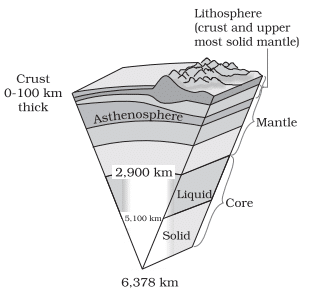
Sources & Information about Interior
- Most of our knowledge about the interior of the earth is largely based on estimates and inferences.
- Direct sources are deep sea drilling project and volcanic eruption
- Deep earth mining and drilling reveals the nature of rocks deep down the surface.
- Mponeng gold mine and TauTona gold mine in South Africa are deepest mines reaching to a depth of 3.9 km
- The deepest drill at Kola, in Arctic Ocean, has so far reached a depth of 12 km.
Indirect Sources
- Meteors that reach the earth.
- Structure observed in the meteors are similar to that of the earth
- Other indirect sources include gravitation, magnetic field, and seismic activity
Gravitation Force (g)
- It is not the same at different latitudes on the surface.
- It is greater near the poles and less at the equator because of the distance from the core.
- The reading of the gravity at different places is influenced by many other factors.
- Such a difference is called gravity anomaly.
- Gravity anomalies give us information about the distribution of mass of the material in the crust of the earth.
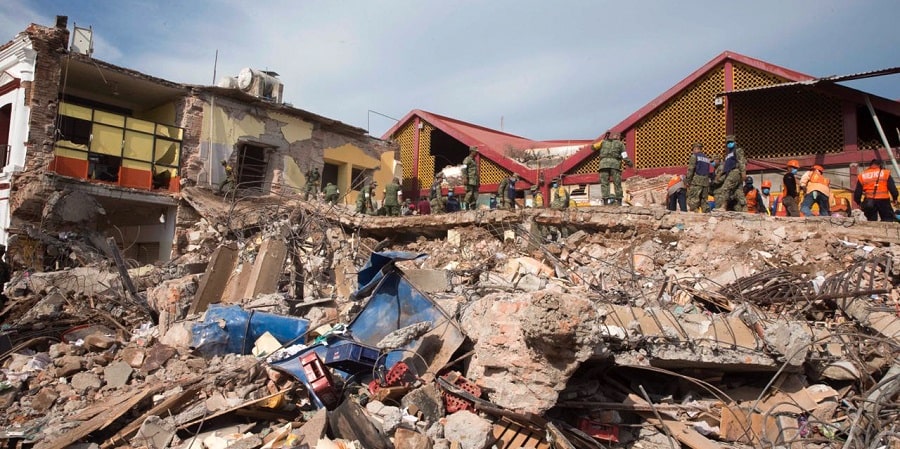
Earthquake
- The study of seismic waves provides a complete picture of the layered interior.
- An earthquake in simple words is shaking of the earth.
- It is caused due to release of energy, which generates waves that travel in all directions.
- The release of energy occurs along a fault.
- A fault is a sharp break in the crustal rocks.
- Rocks along a fault tend to move in opposite directions.
- The point where the energy is released is called the focus or hypocenter of an earthquake.
- Point on the surface, nearest to the focus, is called epicenter
- All natural earthquakes take place in the lithosphere.
- Seismograph records the waves reaching the surface
- Earthquake waves are basically of two types – body waves and surface waves.
Body Waves
- It generates due to the release of energy at the focus and move in all directions travelling through the body of the earth.
- Velocity of waves changes as they travel through materials with different densities.
- The denser the material, the higher is the velocity.
- Their direction also changes as they reflect or refract when coming across materials with different densities.
- The variations in the direction of waves are inferred with the help of their record on seismograph.
- There are two types of body waves P and S-waves.
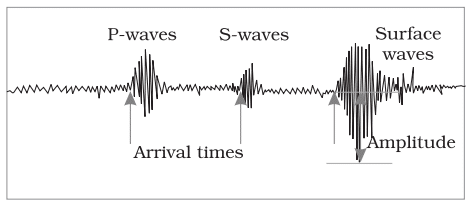
P-waves
- P-waves move faster and the first to arrive at the surface.
- These are also called ‘primary waves’
- P-waves are similar to sound waves.
- They travel through gaseous, liquid and solid materials.
- They vibrate parallel to the direction of the wave.
- P-waves creates density differences in the material leading to stretching and squeezing of the material.
S-waves
- S-waves arrive at the surface with some time lag.
- These are called secondary waves.
- S-waves can travel only through solid materials
- It has helped scientists to understand the structure of the interior of the earth.
- Direction of vibrations of S-waves is perpendicular to the wave direction in the vertical plane.
- They create troughs and crests in the material through which they pass.
Surface waves
- Body waves interact with the surface rocks and generate new set of waves called surface waves.
- These waves move along the surface
- They are the last to report on seismograph.
- These waves are more destructive, cause displacement of rocks, and hence, the collapse of structures occurs.
- They are mainly two types Rayleigh Waves (R waves) and Long Waves (L Waves).
- Long waves are the ones that cause maximum destruction to the buildings.
- Their order of appearance is – PSLR on seismograph
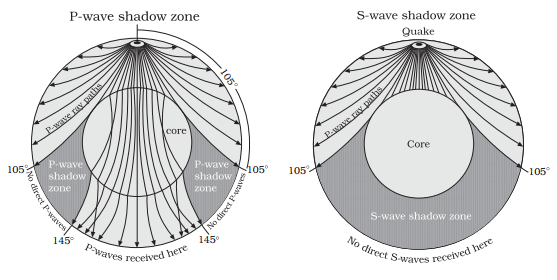
Shadow Zone
- Some specific areas where the waves are not reported, is called ‘shadow zone’.
- Seismographs located at any distance within 105° from the epicentre, recorded the arrival of both P and S-waves.
- Seismographs located beyond 145° from epicentre, record the arrival of P-waves, but not that of S-waves.
- A zone between 105° and 145° from epicentre was identified as the shadow zone for both the types of waves.
- The entire zone beyond 105° does not receive S-waves.
- Shadow zone of S-waves is not only larger in extent but it is also a little over 40% of the earth surface
Types of Earthquakes
Tectonic Earthquake
- Those are most common earthquakes.
- These are generated due to sliding of rocks along a fault plane.
- Tectonic plates can be displaced in two way
- Vertical displacement
- Horizontal displacement
Volcanic Earthquake
- A special class of tectonic earthquake is sometimes recognised as volcanic earthquake.
- These are occurred in the areas of active volcanoes.
Collapse Earthquakes
- In the areas of intense mining activity, sometimes the roofs of underground mines collapse causing minor tremors.
Explosion Earthquakes
- Ground shaking may also occur due to the explosion of chemical or nuclear devices
Reservoir Induced Earthquakes
- The earthquakes that occur in the areas of large reservoirs are referred to as reservoir induced earthquakes
Measuring Earthquakes
- The earthquake events are scaled either according to the magnitude or intensity of the shock.
- Magnitude scale is known as the Richter scale.
- The magnitude relates to the energy released during the quake.
- It expressed in absolute numbers, 0-10.
- The intensity scale is named after Mercalli
- Intensity scale takes into account the visible damage caused by the event.
- The range of intensity scale is from 1-12.
Effects of Earthquake
- Ground Shaking
- Differential ground settlement
- Land and mud slides
- Soil liquefaction
- Ground lurching
- Avalanches
- Ground displacement
- Floods from dam and levee failures
- Fires
- Structural collapse
- Falling objects
- Tsunami
- The effect of tsunami would occur only if the epicentre of the tremor is below oceanic waters and the magnitude is sufficiently high.
- Tsunamis are waves generated by the tremors and not an earthquake in itself.
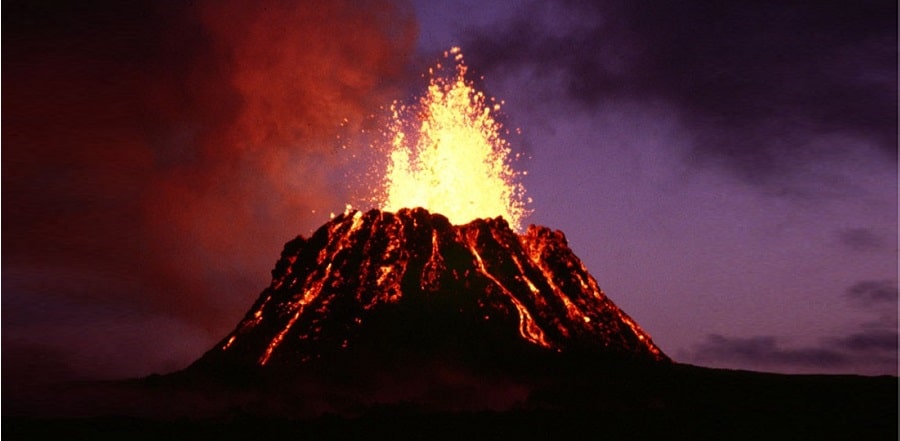
Volcanoes
- Volcanoes are classified on the basis of nature of eruption and the form developed at the surface.
Shield Volcanoes
- Shield volcanoes are the largest of all the volcanoes on the earth.
- The Hawaiian volcanoes are the most famous
- It made of Basalt, a type of lava that is very fluid when erupted
- For this reason, these volcanoes are not steep
- Basalt is characterised by low–explosive
- Upcoming lava moves in the form of a fountain and throws out the cone at the top of the vent and develops into cinder cone
Composite Volcanoes
- These volcanoes are characterised by eruptions of cooler and more viscous lavas than basalt.
- These volcanoes often result in explosive eruptions.
- Along with lava, large quantities of pyroclastic material and ashes find their way to the ground.
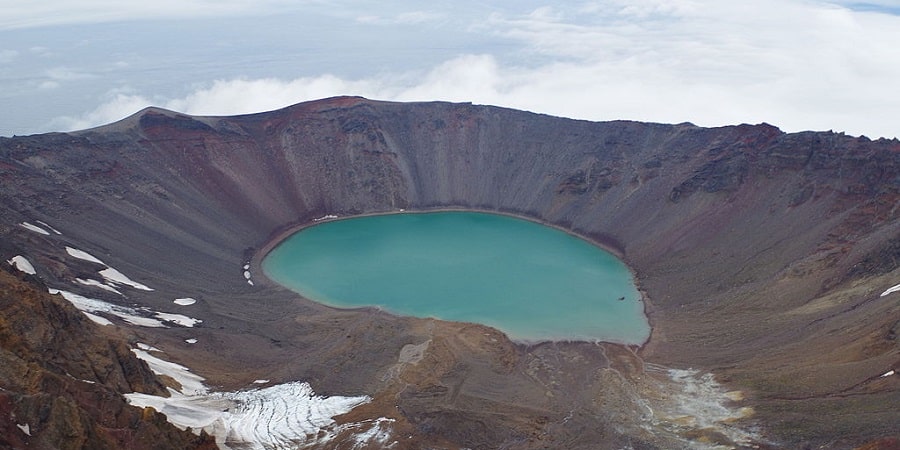
Caldera
- These are the most explosive of the earth’s volcanoes.
- They are usually so explosive that when they erupt they tend to collapse on themselves rather than building any tall structure.
- The collapsed depressions are called calderas and it form Crater–lake.
- Their explosiveness indicates that the magma chamber supplying the lava is not only huge but is also in close vicinity.
Flood Basalt Provinces
- These volcanoes outpour highly fluid lava that flows for long distances.
- There can be a series of flows with some flows attaining thickness of more than 50 m.
- Individual flows may extend for hundreds of km.
- The Deccan Traps from India, presently covering most of the Maharashtra plateau, are a much larger flood basalt province.
Mid-Ocean Ridge Volcanoes
- These volcanoes occur in the oceanic areas.
- There is a system of mid-ocean ridges more than 70,000 km long that stretches through all the ocean basins.
- The central portion of this ridge experiences frequent eruptions.
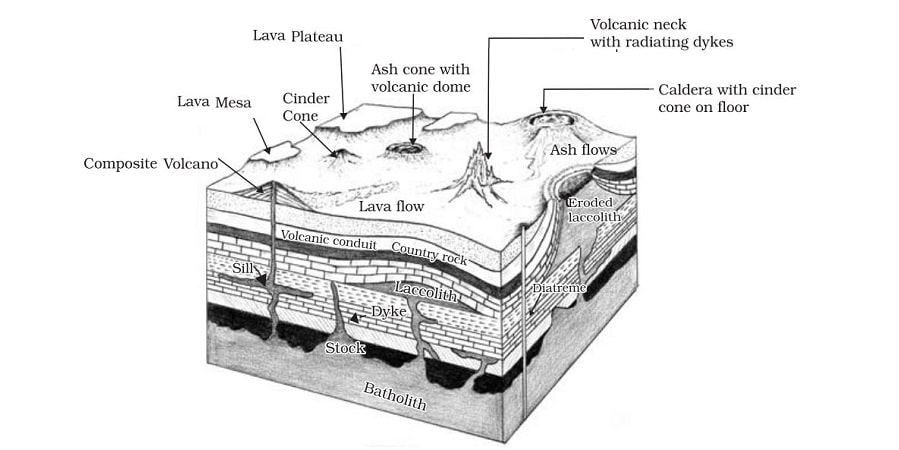
Volcanic Landforms
Intrusive Forms
- Depending on the location of the cooling of the lava, igneous rocks are classified as
- Volcanic rocks – cooling at the surface
- Plutonic rocks – cooling in the crust
- The lava that cools within the crustal portions assumes intrusive forms.
Batholiths
- A large body of magmatic material that cools in the deeper depth of the crust develops in the form of large domes.
- Batholiths are the cooled portion of magma chambers.
Laccoliths
- A laccolith is a sheet intrusion that has been injected between two layers of sedimentary rock.
- The pressure of the magma is high enough that the overlying strata are forced upward, giving the laccolith a dome or mushroom-like form with a generally planar base
- It can be regarded as the localised source of lava that finds its way to the surface.
- The Karnataka plateau is spotted with domal hills of granite rocks.
Lapolith, Phacolith & Sills
- As and when the lava moves upwards, a portion of the same may tend to move in a horizontal direction wherever it finds a weak plane.
- It may get rested in different forms. In case it develops into a saucer shape, concave to the sky body, it is called lapolith.
- A wavy mass of intrusive rocks, at times, is found at the base of synclines or at the top of anticline in folded igneous country.
- Such wavy materials have a definite conduit to source beneath in the form of magma chambers (subsequently developed as batholiths). These are called the phacoliths.
- The near horizontal bodies of the intrusive igneous rocks are called sill or sheet, depending on the thickness of the material. The thinner ones are called sheets while the thick horizontal deposits are called sills.
Dykes
- When the lava makes its way through cracks and the fissures developed in the land
- It solidifies almost perpendicular to the ground.
- It gets cooled in the same position to develop a wall-like structure.
- Such structures are called dykes.
- These are the most commonly found intrusive forms in the western Maharashtraarea.

